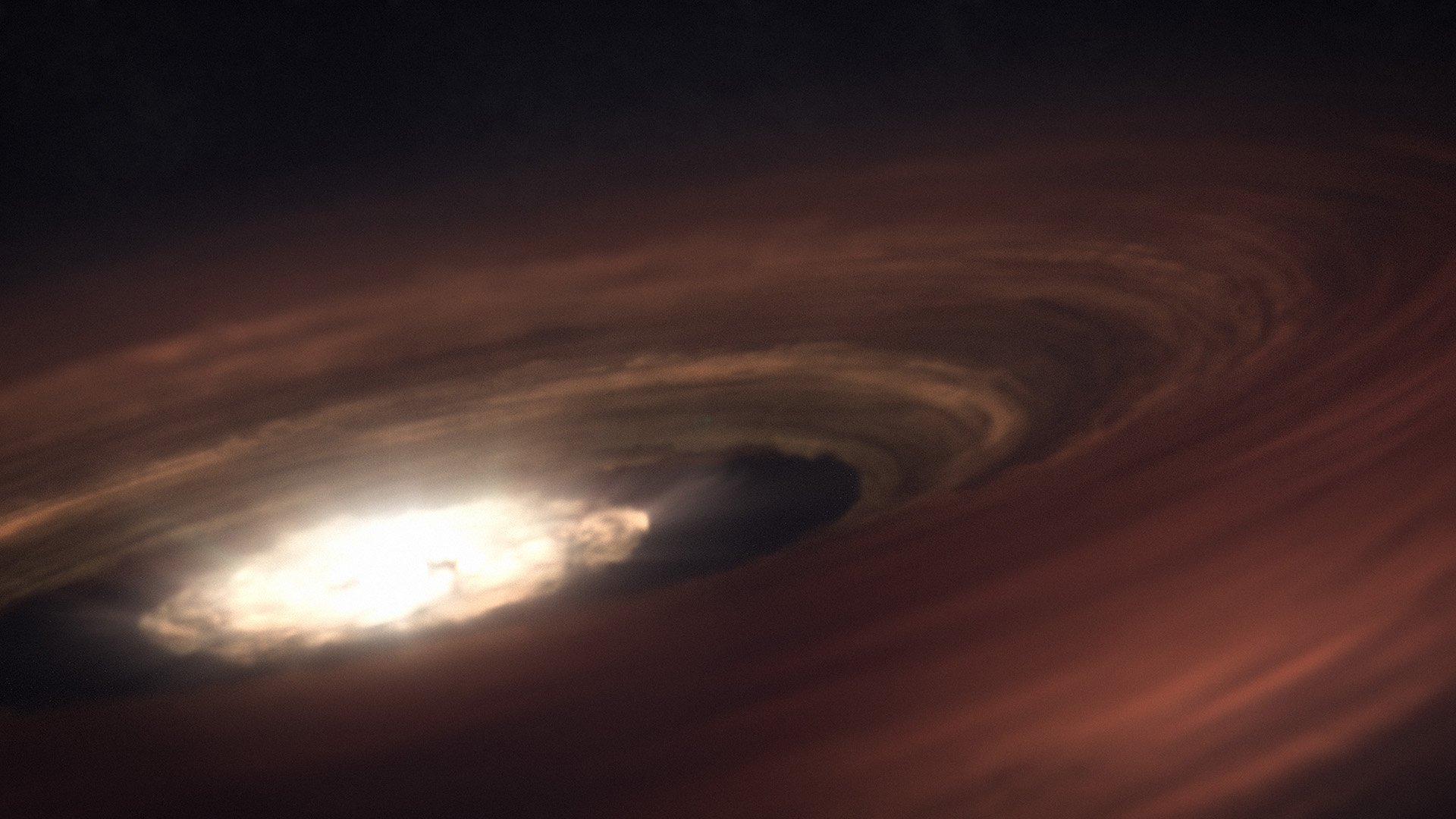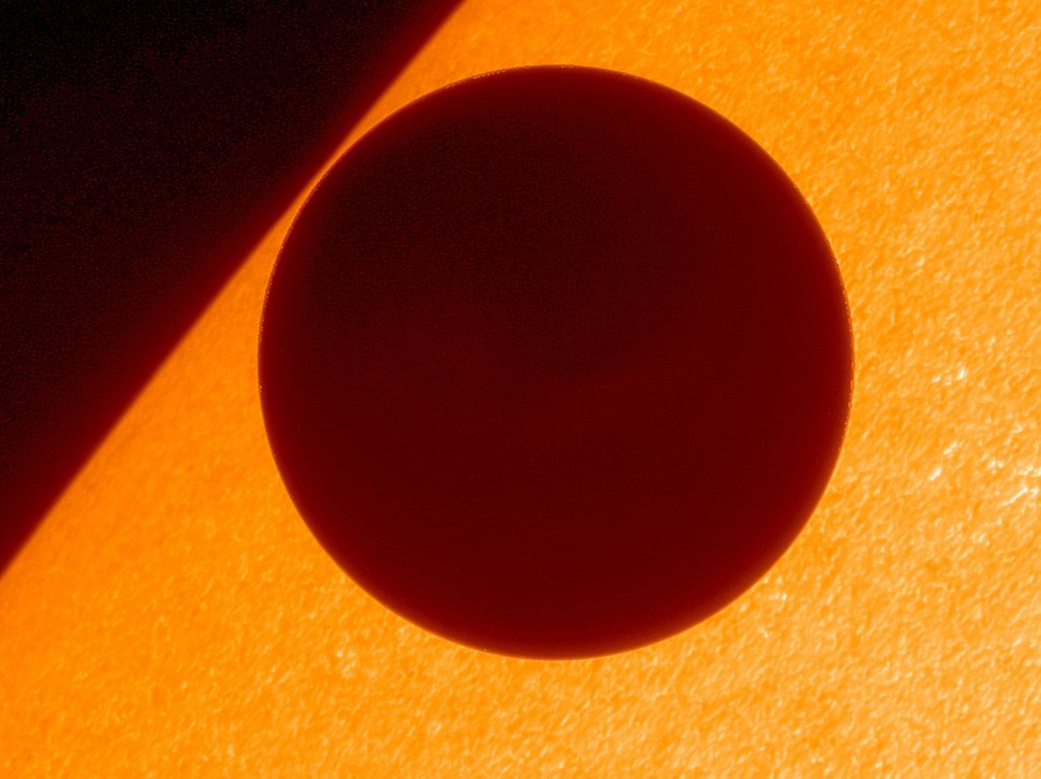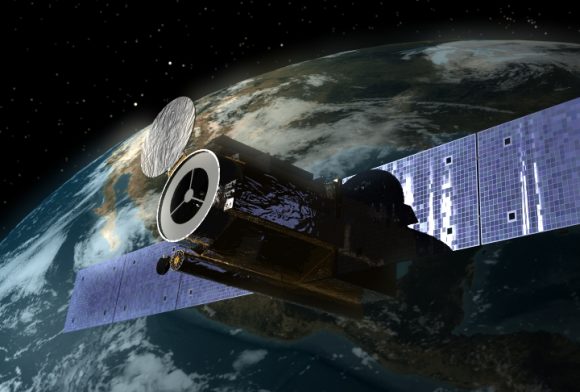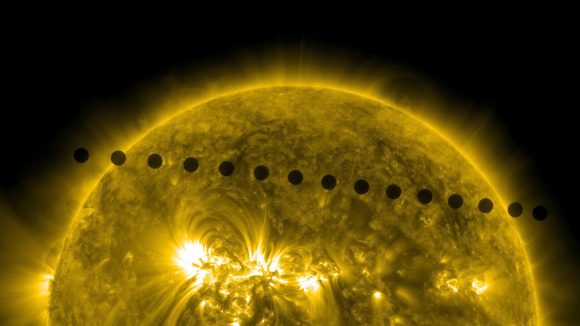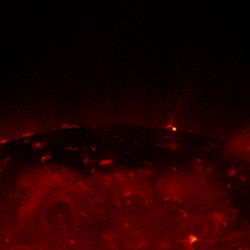Blinking spots of intense light are being observed all over the lower atmosphere of the Sun. Not just in the active regions, but in polar regions, quiet regions, sunspots, coronal holes and loops. These small explosions fire elegant jets of hot solar matter into space, generating X-rays as they go. Although X-ray jets are known to have existed for many years, the Japanese Hinode observatory is seeing these small flares with unprecedented clarity, showing us that X-ray jets may yet hold the answers to some of the most puzzling questions about the Sun and its hot corona.
Although a comparatively small mission (weighing 875 kg and operating just three instruments), Hinode is showing the world some stunning high resolution pictures of our nearest star. In Earth orbit and kitted out with an optical telescope (the Solar Optical Telescope, SOT), Extreme ultraviolet Imaging Spectrometer (EIS) and an X-Ray Telescope (XRT), the light emitted from the Sun can be split into its component optical, ultraviolet and X-ray wavelengths. This in itself is not new, but never before has mankind been able to view the Sun in such detail.
It is widely believed that the violent, churning solar surface may be the root cause of accelerating the solar wind (blasting hot solar particles into space at a mind-blowing 1.6 million kilometers per hour) and heating the million plus degree solar atmosphere. But the small-scale processes close to the Sun driving the whole system are only just beginning to come into focus.
Up until now, small-scale turbulent processes have been impossible to observe. Generally, any feature below 1000 km in size has remained undetected. Much like trying to follow a golf ball in flight from 200 meters away, it is very difficult (try it!). Compare this with Hinode, the same golf ball can be resolved by the SOT instrument from nearly 2000 km away. That’s one powerful telescope!
The limit of observable solar features has now been lifted. The SOT can resolve the fine structure of the solar surface to 180 km, this is an obvious improvement. Also, the EIS and XRT can capture images very quickly, one per second. The SOT can produce hi-res pictures every 5 minutes. Therefore, fast, explosive events such as flares can be tracked easier.
Putting this new technology to the test, a team led by Jonathan Cirtain, a solar physicist at NASA’s Marshall Space Flight Center, Huntsville, Alabama, has unveiled new results from research with the XRT instrument. X-ray jets in the highly dynamic chromosphere and lower corona appear to occur with greater regularity than previously thought.
X-ray jets are very important to solar physicists. As magnetic field lines are forced together, snap, and form new configurations, vast quantities of heat and light are generated in the form of a “microflare”. Although these are small events on a solar scale, they still generate huge amounts of energy, heating solar plasma to over 2 million Kelvin, create spurts of X-ray emitting plasma jets and generate waves. This is all very interesting, but why are jets so important?
The solar atmosphere (or corona) is hot. In fact, very hot. Actually, it is too hot. What I’m trying to say is that measurements of coronal particles tell us the atmosphere of the Sun is actually hotter than the Suns surface. Traditional thinking would suggest that this is wrong; all sorts of physical laws would be violated. The air around a light bulb isn’t hotter than the bulb itself, the heat from an object will decrease the further away you measure the temperature (obvious really). If you’re cold, you don’t move away from the fire, you get closer to it!
The Sun is different. Through interactions near the surface of the Sun between plasma and magnetic flux (a field known as “magnetohydrodynamics” – magneto = magnetic, hydro = fluid, dynamics = motion: “magnetic-fluid-motion” in plain English, or “MHD” for short), MHD waves are able to propagate and heat up the plasma. The MHD waves under scrutiny are known as “Alfvén wavesâ€? (named after Hannes Alfvén, 1908-1995, the plasma physics supremo) which, theoretically, carry enough energy from the Sun to heat the solar corona hotter than the solar surface. The one thing that has dogged the solar community for the last half a century is: how are Alfvén waves produced? Solar flares have always been a candidate as a source, but observation suggested that there wasn’t enough flares to generate enough waves. But now, with advanced optics used by Hinode, many small-scale events appear to be common… bringing us back to our X-ray jets…
Previously, only the largest X-ray jets have been observed, putting this phenomenon at the bottom of the priority list. NASA’s Marshall Space Flight Center group has now turned this idea on its head by observing hundreds of jet events each and every day:
“We now see that jets happen all the time, as often as 240 times a day. They appear at all latitudes, within coronal holes, inside sunspot groups, out in the middle of nowhere–in short, wherever we look on the sun we find these jets. They are a major form of solar activity” – Jonathan Cirtain, Marshall Space Flight Center.
So, this little solar probe has very quickly changed our views on solar physics. Launched on September 23, 2006, by a consortium of countries including Japan, USA and Europe, Hinode has already revolutionized our thinking about how the Sun works. Not only looking deep into the chaotic processes in the solar chromosphere, it is also finding new sources where Alfvén waves may be generated. Jets are now confirmed as common events that occur all over the Sun. Could they provide the corona with enough Alfvén waves to heat the Sun’s corona more than the Sun itself? I don’t know. But what I do know is, the sight of solar jets flashing to life in these movies is awesome, especially as you see the jet launch into space from the original flash. This is also a very good time to be seeing this amazing phenomenon, as Jonathan Cirtain points out the site of solar jets reminds him of “the twinkle of Christmas lights, randomly oriented. It’s very pretty”. Even the Sun is getting festive.

